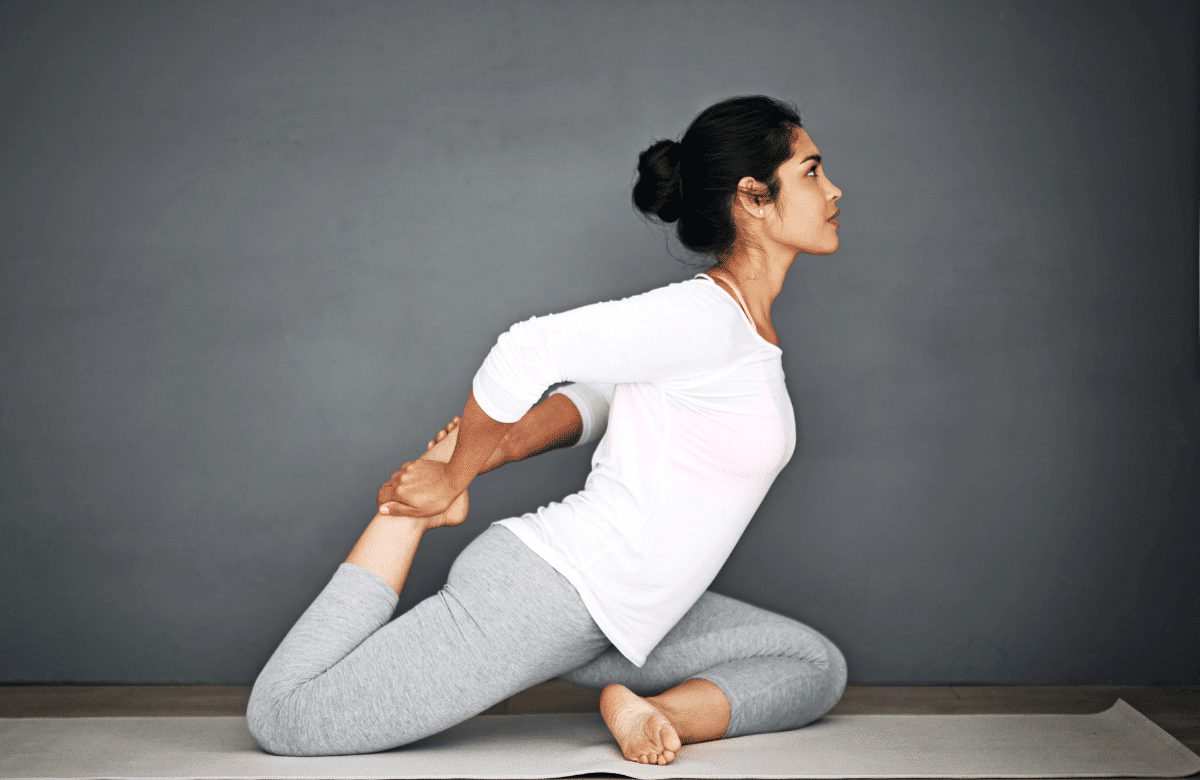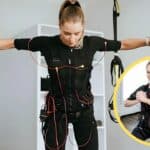Our glutes are one of the most active muscles in our body. They are often tight or sore, especially after sitting for a long period. In this article, we’re going to show you the 12 best glute stretches for glute stiffness. Let’s get started.
Jump to:
- Glute Anatomy and Functions
- When Should You Stretch Your Glutes: Benefits of Glute Stretches
- Static and Dynamic Glute Stretches
- How to Stretch Your Glutes: 12 Best Glute Stretches
- 1. Single Knee-To-Chest Stretching
- 2. Pigeon Pose
- 3. Seated Figure Four Stretch
- 4. Butterfly
- 5. Glute Stretch With Resistance Band
- 6. Standing Figure Four Stretch
- 7. Seated Bent Knee Hug Stretch
- 8. Supine Knee Hug
- 9. Seated Knee Stretch
- 10. Table Glute Stretch
- 11. Kneeling Hip Flexor Stretch/Front Lunge
- 12. Lying Leg Crossover Stretch
- Our Tips for Better Glute Stretches
- Common Mistakes
- Best Glute Stretches: FAQs
Glute Anatomy and Functions
The Gluteal Muscle Group
The gluteal muscles are essential for different functions including extension and also abduction of the hip joint. Therefore they’re quite helpful for different movements including walking, running, standing on one leg, or just walking the stairs.
The gluteal muscle group contains four muscles:
- the gluteus maximus;
- the gluteus medius;
- the gluteus minimus;
- and the tensor fasciae latae.

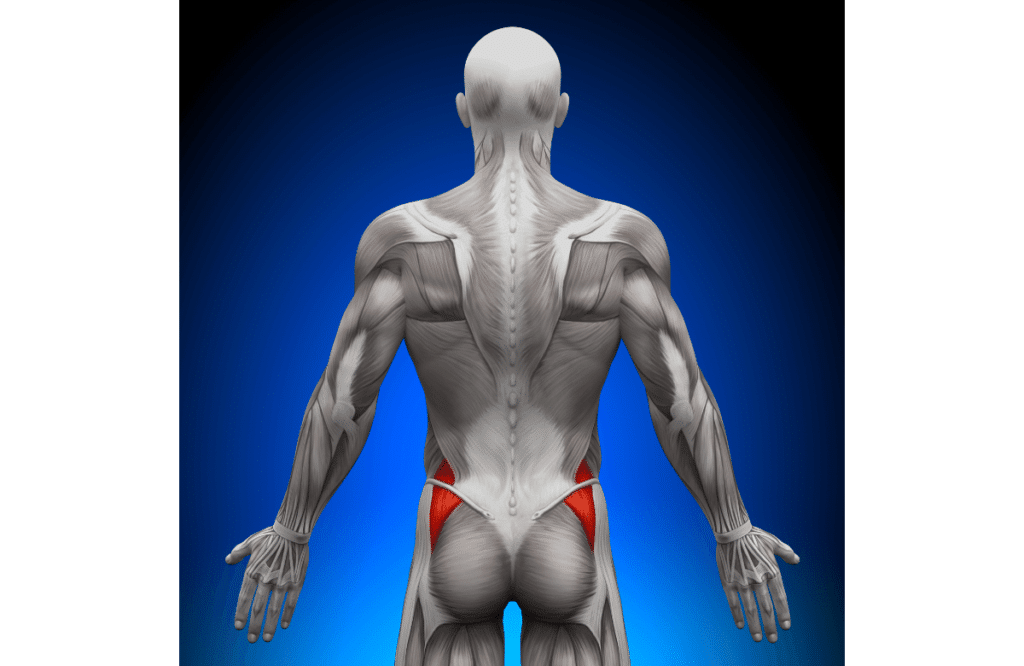
Underneath the gluteal muscles are another layer known as the deep gluteal muscle group.
The Anatomy Of The Gluteus Maximus Muscle
Let’s familiarize ourselves with the anatomy of this muscle. The gluteus maximus is the largest and most prominent of the four superficial gluteal muscles. In fact, this is the largest muscle by volume in the entire human body.
The gluteus maximus is the strongest extensor and also the external rotator of the hip joint. It shapes the gluteal surface and therefore creates the shape of the buttocks. It is one of the key muscles you need to work out to achieve your dream booty.
An important step in understanding the functions of the gluteus maximus is learning the bones and tissues it attaches to and the joints that it crosses.
The gluteus maximus originates from the lateral posterior surface of the sacrum and the coccyx as well as the gluteal surface of the ilium posterior to the posterior gluteal line. Then it slopes across the gluteal area at a roughly 45-degree angle.
The gluteus maximus attaches to the ilium part of the hip bone and the femur of the thigh bone. Therefore it crosses the hip joint. This means that the gluteus maximus performs movements at the hip joint.
The Functions of The Gluteus Maximus Muscle
The gluteus maximus has several functions but in order to carry out its actions it needs a nerve to tell it what to do. The gluteus maximus is innervated by the inferior gluteal nerve. So, what movements does the gluteus maximus perform?
The first and most important function of the gluteus maximus is the extension of the thigh at the hip joint. This is responsible for producing up to 75% of the power behind this movement with the rest coming mainly from the posterior thigh muscles.
Extension of the thigh at the hip joint involves increasing the angle between the trunk and the thigh. One way we can get our gluteus maximus working is by squatting.
There is the gluteus medius underneath the gluteus maximus. It also does extension and lateral rotation at the hip joint. The gluteus minimus is deep to the gluteus medius muscle and it also performs the same functions at the hip joint.
Then we have a whole bunch of lateral rotators underneath.
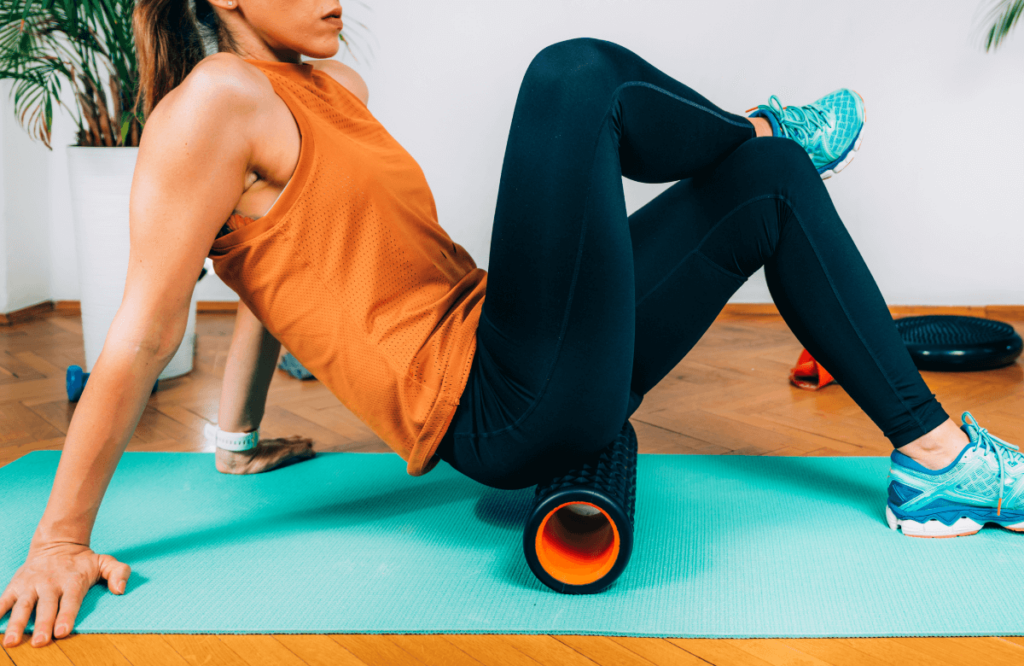
Deep Gluteal Muscle Group
The deep group of small muscles of the gluteal region includes five muscles:
- piriformis muscle;
- internal obturator;
- superior gemellus muscle;
- inferior gemellus muscle;
- and quadratus femoris muscle.
These muscles are present deep in the superficial group of large muscles. All of these muscles are lateral rotators so they are all synergistic to each other.
The main action of all these muscles is to externally rotate the femur at the hip joint. The obturator internal muscle with the superior and inferior gemellus muscle act as one unit and along with the external rotation they also have a minor function of abducting the femur at the hip joint.
When Should You Stretch Your Glutes: Benefits of Glute Stretches
1. Release Lower Back Pain
Back pain can be excruciatingly painful. It can be so debilitating that it can become difficult for you to move correctly.
The main cause of lower back pain is the weakness of the gluteus medius muscle and muscles that flex the hip joint. The hip flexors, such as the Iliopsoas muscle, release stress from the lumbar spine. Stretching them can help reduce your risk of back pain.
2. Increase Range of Motion
Especially PNF stretching is highly effective to increase the range of movements in the long term. Why it is like that is not 100% clear until now. Maybe that’s because you let your body and nervous system get used to the intensity for a longer time than when doing dynamic stretches as you do dynamic stretching exercises usually for a shorter period.
Nevertheless, there are generally many contradictions and different opinions about that. So definitely more studies must be performed to make a clear statement about that.
3. Help You Warm Up Before a Workout
Dynamic stretching is great when you warm up but it’s not good as a warm-up by itself, but additionally to one. When you are warm your muscle cells are flooded with blood and your collagen fibers are more elastic.
And while doing dynamic stretching you use a wide range of movements and with that, you additionally keep your muscles warm in contrast to static stretches. Static stretching decreases blood flow by constricting the blood vessels while dynamic stretching increases it.
4. Prepare Your Nervous System for Exercise
What you also need to understand is that while stretching you let your nervous system adapt and tolerate the degree of muscle extension without firing pain signals. This helps your body muscles to be more extensible, thus it can prevent injuries. So dynamic stretching prepares your nervous system for the upcoming motions.
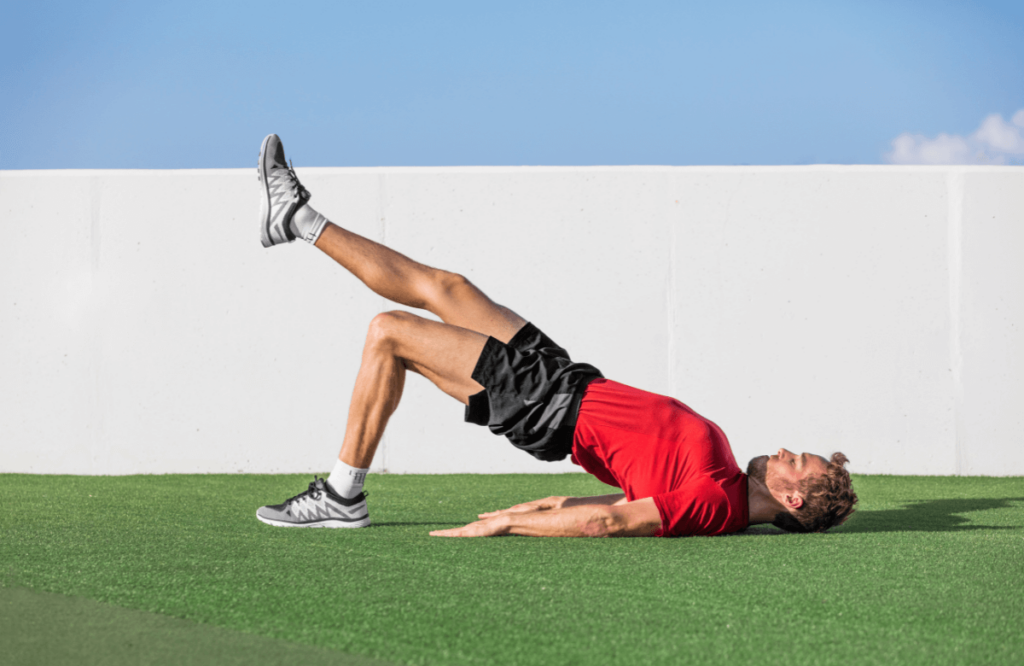
Static and Dynamic Glute Stretches
Which of those stretching methods is better? It all depends on when you stretch and what your goal is.
Both dynamic and static stretching methods have the end goal to loosen up your muscle cells and collagen fibers, increase the range of motion and thus flexibility, and prevent injuries. And based on this we can evaluate both methods.
Multiple studies have shown that dynamic stretching is the best before a body workout. You will have more energy and better performance than if you don’t stretch or do dynamic stretch exercises.
However, when muscle cells were filled with blood, static stretching exercises showed better results after a workout in terms of long-term improvement of range of motion and flexibility.
To sum up, nowadays, the fitness routine is to do dynamic stretching before a workout and static stretching afterward.
How to Stretch Your Glutes: 12 Best Glute Stretches
When you’re going through these 12 best glute stretches, take your time and hold it for 30 seconds and then move on to the next one. Use at least one of these best glute stretches to make sure you’re stretching out properly.
1. Single Knee-To-Chest Stretching
The first stretch is going to be the knee-to-chest stretch. Start by lying on your back. Bend up both knees and then pull up the one that you want to stretch. Grab underneath your thigh. Some people like to grab on top of the knee and pull up which is fine. If you haven’t had any knee issues, this is a much better way to do it.
So just pull the knee towards the chest as far as you comfortably can. You should feel a stretch in your glute muscles. Hold that stretch for about 30 seconds. After you get that stretch on that side, give a little break to that side, and then come up and stretch another side as well.
If you’ve been working only one side, the other side is going to be a little sore even if it’s not the injured side. Therefore do 3 reps on each side. If you don’t have improved flexibility, that’s fine. Just try to do it as close to your face as possible.
2. Pigeon Pose
What you’re going to do is lower your body down into a lunge position. Put your leg in front of you and go as low as you can to get the comfortable stretch. You are going to sink down into this position. Put your head down to get more of the stretch.
You might need to start up from a high-hand position. Then you can work your way down to the elbows. If you’re finding this way too challenging or it just starts getting progressively harder, then go back up to the hands.
It might even be helpful to have something propped up in front of you. For example, some yoga blocks or a bench.
You are going to be working the other side. You might feel one side tighter than the other. That’s normal. Just do what you can to sink deep into it.
3. Seated Figure Four Stretch
The next one is going to be a chest glute stretch in the figure four position, but sitting up. You can do it lying down but this one gets the glutes a little bit better.
Take the side that you want to stretch and cross the ankle just above the knee so you make that figure four position. Bring the heel up a little bit. That’ll get a little pull. And then lean forward to the leg and you should feel that stretch right through there.
Hold that gentle stretch for about 20-30 seconds and then relax. If you’re just going to do one side, give yourself about a 10-second break in between. But we recommend stretching both sides because everything is connected there. So, stretch for 20-30 seconds on each side three times.
4. Butterfly
You’re going to sit down for the butterfly stretch. You’re bringing your feet so that the bottoms of your feet are facing each other. Your elbows are going to be pressing against your knees. You’re trying to bring them low and get your face towards your feet. Lean into it.
Gravity pulls your legs apart and helps you stretch. You can use your arms to get a little more of a push on your legs and open up the inner thigh. You can feel that low back open up as well. But the focus of this is to try to open up the inner thigh and get a deeper stretch there.
You want to start with a minimum of 30 seconds but try to build up to 2 minutes. You also want to focus on any knee pain. If there is any muscle tension or some scar tissue in there, then you’re going to have to modify this.
This is more of a hip stretch. But your hips are used a lot when you’re working your glutes. So, this is a very useful stretch.
5. Glute Stretch With Resistance Band
For the next one, you are going to do the resistance band glute stretch. You’re going to get a long resistance band and get it around the ball mount of your foot. Bring the leg up toward the ceiling. When you do this glute stretch, you want to make sure your upper body stays flat on the ground and you’re bringing your leg to its side.
It may be excruciating for you to straighten your knee. You don’t have to straighten it completely. What you want to do is experiment with this for a moment and find what is right for you. It may be better for you to have your leg further out and then you don’t feel the intensity in your knee.
What we want you to focus on is not feeling any knee pain. We want you to find a place where you’re feeling it in your glute muscles.
Then you are going to stretch the other side. Don’t forget when you are doing deeper stretches it’s very important that you are breathing in and breathing out all the way to the side.
6. Standing Figure Four Stretch
It’s a great deep hip opener. You are going to bring your left ankle to your right knee, then bend your right knee. Keep your core tight.
If you want to go deeper, reach your left hand to the floor. Make sure your left thigh bone is open. Then twist your torso to the right through your right shoulder and reach your right arm up. Gaze up to the sky.
Sit lower by bending your right knee more. Breathe and come out of it. Right hand down and left foot down. Once you’ve done one side, make sure you do the other side.
7. Seated Bent Knee Hug Stretch
A seated bent knee hug is an excellent stretch for the gluteus maximus muscle. For this stretch, you are going to start by crossing one leg over the other. You are going to wrap your arms around the knee as much as possible. And then bring that knee as close as you can to the chest and hold that position for 30-60 seconds.
Don’t round your spine because rounding it you just won’t feel this glute stretch anymore. So, sit up tall and just hold your knee. Keep breathing. Switch to the other side.
8. Supine Knee Hug
This stretching exercise is designed to release tight glute muscles, hips, and lower back muscles as well as open up the lumbar spine and help improve flexibility. This is a great stretch to do after any workout. Although this is a stretching exercise, you should never stretch to the point of pain.
To begin, you should lie on an exercise mat with your knees bent, feet flat on the floor, and arms by your sides. From this position, slowly bring one knee at a time towards the chest. Then place your hands just below your knees and gently squeeze them into the chest. Take a couple of breaths in this stretch.
You can hold that stretch for anywhere between 30-60 seconds. Be sure to keep your head down, neck long, and shoulders relaxed throughout.
9. Seated Knee Stretch
You are going to bring your left leg up. The closer you can bring your left ankle toward your body, the better. Keep your chest nice and tall. Lean your upper body forward.
You can use your arm to pull your knee towards your chest and you’ll stretch through your glute. Hold that stretch for 30-45 seconds and back up. And then you can change sides. That’s a stretch you can do anywhere where you’re sitting. This would give you a nice stretch of the glute muscles.
10. Table Glute Stretch
The next glute stretching exercise doesn’t require any special equipment. You can do this at home or at work if you find something high enough to be able to do it.
Find a flat surface that is going to be a little bit elevated. A bed is perfect or if you have a small table that’s going to be pretty close to your hip level, it’s going to work as well.
What you’re going to do is take the side that you’re looking to stretch and place that leg up on that flat surface. You want to have your knee at 90 degrees. Hold that stretch for about 20-30 seconds and then come back up slowly. Repeat that process 3-5 times on each side.
Make sure your leg is firmly planted on that flat surface. You don’t want to round your back when you do this. You want your back nice and straight and just slowly lean forward. You are going to feel a great stretch in the buttock area.
11. Kneeling Hip Flexor Stretch/Front Lunge
Place a pillow under one of your knees if you need this. Your other foot is positioned in front of your body. Tuck your hips and engage your abdominal muscles. Then gently lunge forward. Be sure to keep your back straight and chest up.
Add rotation toward your lead leg and then add rotation to the other side. Make sure your pelvis doesn’t rotate.
You should feel a gentle stretch in your glutes, hamstrings, and in the front of your hips. Hold this stretch for 20-30 seconds. Perform 2-3 stretches on each side.
12. Lying Leg Crossover Stretch
To perform this floor glute stretch, lay on your back and place your arms flat on the floor. Keep your right leg straight and lift the other leg. Bend your left leg and cross it over attempting to get your knee to the floor. Press on your knee to get more of a stretch. Turn your head to the opposite side and hold for 30 seconds.
Then we’re going to perform this glute stretching exercise moving to the other side. While holding this, you should feel the stretch around your lower back and the butt muscles.
Our Tips for Better Glute Stretches
If you want to improve your stretching efforts and gain flexibility:
- You need to pay attention to how you’re using your body outside of a workout.
- You want your body to be physically warm.
- You want to choose maybe one or two areas to focus on and then consistently stretch those muscles on a daily basis preferably in a dynamic fashion that will include releasing potential fascial tightness.
- And you want to be present. You want to listen, breathe, and pay attention to how your body is feeling during your stretches so you can maximize your results while minimizing injuries.
Common Mistakes
1. Front Lunge
The most common stretching mistake can be seen while performing the front lunge. If the angle of inclination of your front leg is less than 90 degrees or more than that it won’t cause an effective stretch in your leg muscles rather you can end up hurting your hamstrings.
In order to correct this lunge position, you have to incline your leg at a 90-degree angle, keep your back straight and try to push your legs downwards. Look in front while you’re performing this stretch. You can also try pushing your hips downwards while performing this lunge. This is a truly effective stretch for the glutes, hamstrings, and lower back.
2. Stretching an Injured Muscle
Stretching an injured muscle prolongs the healing process and will not help relieve pain.
3. Seated Glute Stretches
The third common stretching mistake is made by people during the seated glute stretch. The head is hung down in this seated position. And you can feel the stress in your neck. This is not an effective stretch; rather you will feel dizziness in your head and hip pain or pain in your lower back and neck.
In order to correct this position, firstly, you will need to stretch your hamstrings, look forward and you will feel the stretch in your hips and glutes. After this, you can point your feet and try to bend your back downwards.

4. Not Listening to Your Body
We have to stop spreading the myth that stretching should be painful or uncomfortable. You need to pay attention to the small shifts and changes in how your body feels during stretching.
When a stretch is painful, it’s a clear message from the body to stop stretching, pushing, or moving in that way. You need to learn to breathe and pay attention to your stretching efforts so you can adjust your position to a strong or significant stretch but without discomfort.
5. Hold Breathing
It might sometimes even take more than a minute for you to start feeling the muscle area loosening up. Don’t force it. Your breathing is going to help you get through it. Once you start holding your breath, that’s when the body starts tensing up. Keep breathing and then your body will naturally start loosening up.
Best Glute Stretches: FAQs
What is the best stretch for glutes?
Here are the best glute stretches: the pigeon pose, the single knee-to-chest stretch, and the seated figure four stretch. But you need to incorporate glute stretches on a daily basis in order to get some stretch and relief in that area.
How do you release tight glutes?
Stretching is one of the most effective ways of improving flexibility and relieving muscle tightness. Try to do our 12 best glute stretches each day to release tight glutes.



